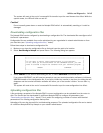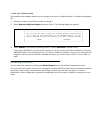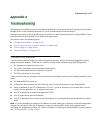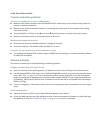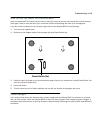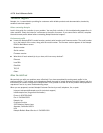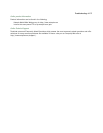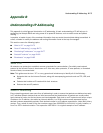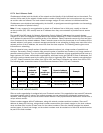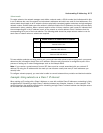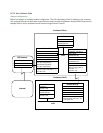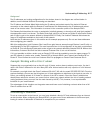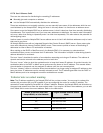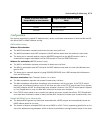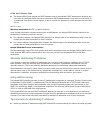
Understanding IP Addressing B-173
AA
AA
pp
pp
pp
pp
ee
ee
nn
nn
dd
dd
ii
ii
xx
xx
BB
BB
UU
UU
nn
nn
dd
dd
ee
ee
rr
rr
ss
ss
tt
tt
aa
aa
nn
nn
dd
dd
ii
ii
nn
nn
gg
gg
II
II
PP
PP
AA
AA
dd
dd
dd
dd
rr
rr
ee
ee
ss
ss
ss
ss
ii
ii
nn
nn
gg
gg
This appendix is a brief general introduction to IP addressing. A basic understanding of IP will help you in
configuring the Netopia R910 and using some of its powerful features, such as static routes and packet
filtering.
In packets, a header is part of the envelope information that surrounds the actual data being transmitted. In
e-mail, a header is usually the address and routing information found at the top of messages.
This section covers the following topics:
■ “What is IP?” on page B-173
■ “About IP addressing” on page B-173
■ “Distributing IP addresses” on page B-177
■ “Nested IP subnets” on page B-182
■ “Broadcasts” on page B-185
What is IP?
All networks use protocols to establish common standards for communication. One widely used network
protocol is the Internet Protocol, also known as IP. Like many other protocols, IP uses packets, or formatted
chunks of data, to communicate.
Note: This guide uses the term “IP” in a very general and inclusive way to identify all of the following:
■ Networks that use the Internet Protocol, along with accompanying protocols such as TCP, UDP, and
ICMP
■ Packets that include an IP header within their structure
■ Devices that send IP packets
About IP addressing
Every networking protocol uses some form of addressing in order to ensure that packets are delivered correctly.
In IP, individual network devices that are initial sources and final destinations of packets are usually called
hosts instead of nodes, but the two terms are interchangeable. Each host on an IP network must have a unique
IP address. An IP address, also called an Internet address, is a 32-bit number usually expressed as four
decimal numbers separated by periods. Each decimal number in an IP address represents a 1-byte (8-bit) binary
number. Thus, values for each of the four numbers range from 00000000 to 11111111 in binary notation, or
from 0 to 255 in decimal notation. The expression 192.168.1.1 is a typical example of an IP address.



